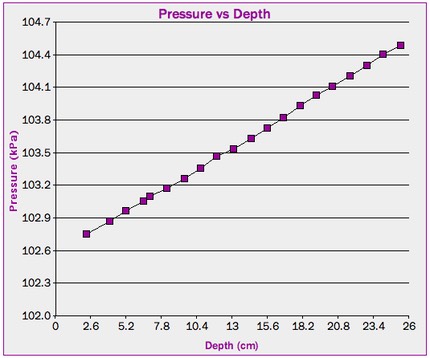Procedural Notes
- Record atmopsheric pressure before submerging hose, but do not include it as part of the data set. That way, you can compare the intercept of the regression line to the measured atmospheric pressure.
- Make sure hose is securely attached to barometer. Have students submerge the hose and watch pressure increase before starting any data collection, just to make sure they are set up correctly, and that they know what the range of pressure increase ought to be.
- Because the hose displaces a significant volume, the depth must always be measured relative to the current water level; there will not be any "zero" mark for measuring depth. Instruct the students to count from the end of the hose to the water line.
- I kept the submerged end of the hose aligned with the whole cm markings on the tube, and increased the depth by dropping the hose end in 1 cm increments; note that this does not result in precisely a 1 cm increase in depth, it's more like a 1.2-1.3 cm depth increase. I was trying to be careful, but it requires attention to line the hose up with the tube markings. However, this is still easier than trying to incrementally maneuver the hose until the water line is on a whole cm marking.

